8.6 /10 1 Votes
3.5/5 Touch Arcade Designer(s) Bill Hogue | 4.6/5 My Abandonware 4.8/5 Classic Retro Games Initial release date 1982 | |||||||||||||||||||||||||||||||||
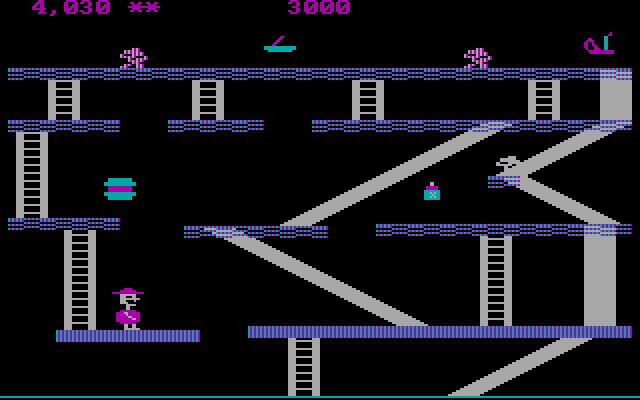 | ||||||||||||||||||||||||||||||||||
Platform games Montezuma's Revenge, Congo Bongo, Jungle Hunt, Pitfall II: Lost Caverns, Keystone Kapers | ||||||||||||||||||||||||||||||||||
How to beat the classic atari game miner 2049er part 1
Miner 2049er is a platform video game created by Bill Hogue that was released in 1982 by Big Five Software. It was developed for the Atari 8-bit family and widely ported to other systems. The title "Miner 2049er" evokes a 21st-century take on the California Gold Rush of around 1849, in which the gold miners and prospectors were nicknamed "49ers."
Contents
- How to beat the classic atari game miner 2049er part 1
- Miner 2049er atari 800xl full game
- Story
- Gameplay
- Development
- Reception
- Hidden features
- Legacy
- References
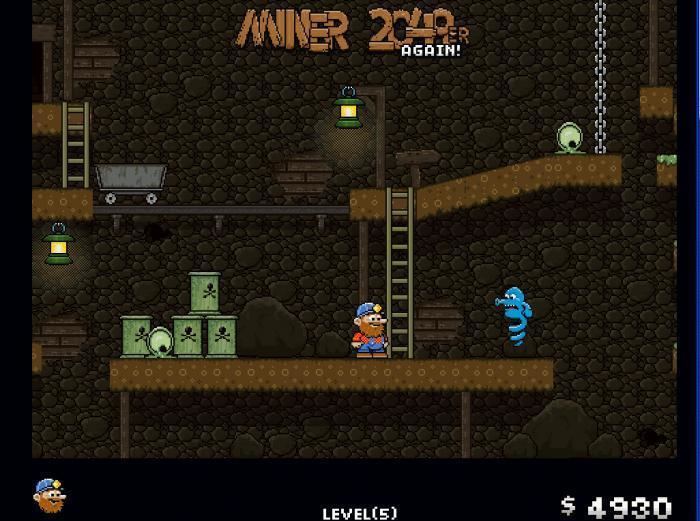
At the time of its release, Miner 2049er was notable for having ten different screens, which was a large number for a platform game. For comparison, the Donkey Kong arcade game had four screens, and many home ports didn't include all of them.
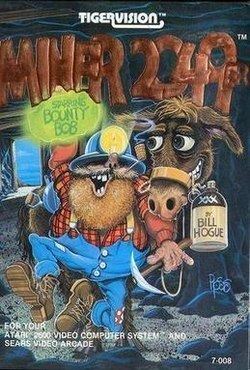
Unlike most of the home computer versions, Miner 2049er for the Atari 8-bit family was released on 16K ROM cartridge with the high price, for 1982, of US$49.95 ($124 today).

Miner 2049er atari 800xl full game
Story
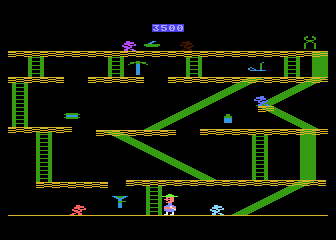
Bounty Bob is a member of the Royal Canadian Mounted Police on a mission to search through all of Nuclear Ned's abandoned uranium mines for the treacherous Yukon Yohan. Bob must claim each section of each mine by running over it. There are a wide variety of futuristic obstacles that he must deal with such as matter transporters, hydraulic scaffolds, and jet-speed floaters and he must also avoid radioactive creatures that have been left behind in the mines.
Gameplay
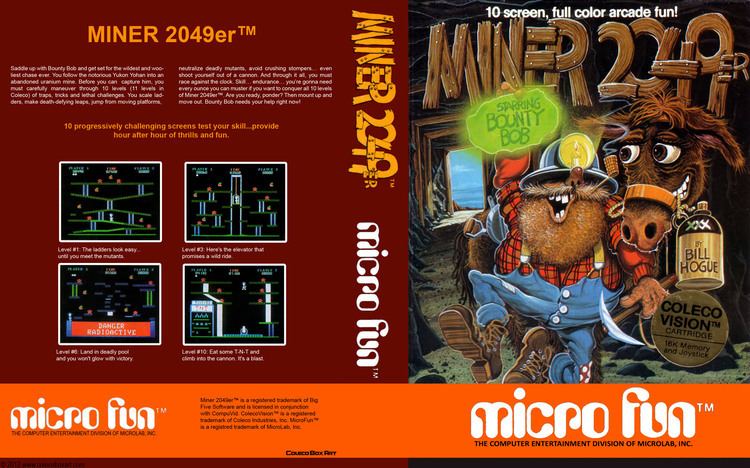
As Bounty Bob, the player's goal is to inspect every section of each mine in search of the evil Yukon Yohan while avoiding the various radioactive creatures that inhabit the mine. As Bounty Bob walks over a section of flooring, it fills with color. To complete the level, every section of flooring must be colored. There are ten mines in total (eleven in the ColecoVision port). Each level is timed and must be completed before the player runs out of oxygen.
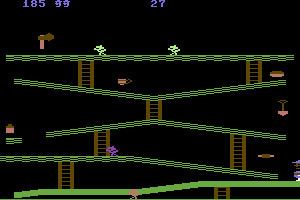
Along the way, Bob encounters many objects left behind by past miners. By collecting these, bonus points are achieved and the radioactive creatures smile and turn green. While in this state, Bob can collect them and earn extra points.
Various obstacles in each mine aid and hinder Bob's progress. Ladders allow him to climb up or down to the next platform, Matter transporters teleport him to other matter transporters in that mine, chutes slide Bob off a platform (often against his will), and pulverizers crush Bob if he gets in their way.
Most levels contain some custom element, which varies from level to level.
Development
Under the name Big Five Software, Bill Hogue programmed commercial computer games in the late 1970s for Radio Shack's TRS-80 Model I home computer. He created several games patterned after actual arcade games, such as Super Nova (Asteroids), Attack Force (Targ), Cosmic Fighter (Astro Fighter), Galaxy Invasion (Galaxian), Meteor Mission II (Lunar Rescue), Robot Attack (Berzerk), and Defense Command (Missile Command). Robot Attack was the first commercial game for the TRS-80 to feature digitized voice.
Hogue was originally going to write Miner 2049er for the TRS-80 Model I, but Radio Shack discontinued it in mid-1982, so he instead developed the game on the Atari 800. The game required 16k at a time when cartridges were normal 8k, so the company had to produce their own circuit boards holding two EPROMs. Early versions of the cartridges had a bug in the elevator code. Due to a production delay, it was first released on the Apple II. A string of ports followed for the IBM PC, Commodore 64, VIC-20, Atari 5200, Atari 2600, Texas Instruments TI/99-4A, and Colecovision. The Atari 2600 version was too big to fit in a 4K cartridge ROM, so two separate cartridges were released, each containing three selected levels.
Two games followed that featured Bounty Bob, both named Scraper Caper during development. The first had Bob acting as a fireman in a side-scrolling building, but that version was scrapped and they started over with a new game where Bob was chasing fireballs in 3D. Neither was considered appealing enough to release, and in 1985 an official sequel was released, Bounty Bob Strikes Back. However, it never achieved the same level of success as its predecessor, and it was Hogue's last game.
Reception
ANALOG Computing in 1982 called Miner 2049er "one of those rare games which looks as if it were designed, not just thrown together", praising its animation and large number of levels, and concluded that it "is a must-play game for the Atari". Sofline in 1983 stated that the Apple version was a good port of the Atari version, which "You already knew ... was a great game".
The game reached #1 on the Softsel Hot List in 1983. The same year, Softline's readers named the game the fourth most-popular Apple and sixth most-popular Atari program of 1983. Miner 2049er was awarded "1984 Electronic Game of the Year" at the 5th annual Arkie Awards, where the judges noted that the game was available on so many platform that it had become "the most widely played home electronic game of all time", and that "no home-arcade title has had the impact" that the game had. It also won Can Outstanding Software Award from Creative Computing that year.
Hidden features
Pressing the space bar for several seconds skips a level.
On the Atari 800, keying in the phone number on the title screen, followed by a level number, skips to that level.
Legacy
Miner 2049er made a comeback in the mobile gaming market with a re-release in 2007 by Magmic Inc. This version contains two forms of the game. One is a faithful recreation of Hogue's Atari 800 original; the second a modernized version with new graphics and ten new levels. The remake received an IGN Editor's Choice Award and won the Best Revival category in the Best Of 2007 IGN awards. In 2011, Magmic added support for iOS devices.
Also in 2007 Hogue released an emulator coded in C++ with both Bounty Bob games in one package for Windows. The emulator was made available free of charge on the Big Five website. Hogue states that as neither game used any Atari ROM routines they are not necessary for the emulator to run.
The game has been cited as the inspiration behind the Miner Willy and Crystal Caves series of games produced by Software Projects and Apogee Software respectively.
